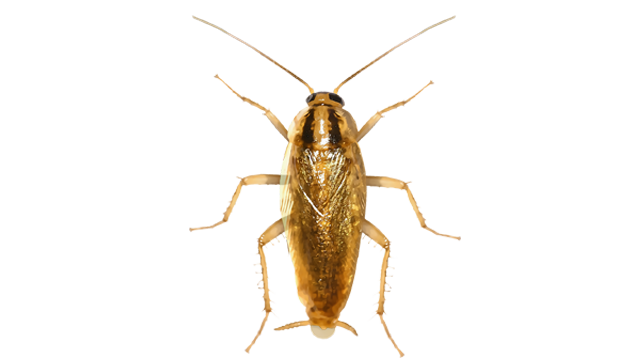German Cockroach

Have you ever wondered how one cockroach seems to turn into hundreds overnight? Making themselves nice and comfy inside of your home. Eating that tasty lasagna you left on the counter. Helping themselves to a cool refreshing drink from the leak under the kitchen sink. Then relaxing behind your refrigerator or in your drawers and cabinets.
This culprit is none other than the German cockroach. This cockroach has adapted to living in close proximity with humans and thrives in places where they have food, water, and harborage. With these three things they are able to infest a space quickly. Because of their ability to reproduce so fast one female and her offspring can create a population of over 30,000 cockroaches in one year. That is why this is a pest of major concern.
Below is a profile of the German cockroach and ways to prevent this pest from infesting your home or property.
| Identification |
|
| Behavior |
|
| Habitat |
|
| Life Cycle (Gradual or Incomplete Metamorphosis) |
|
| Seasonality |
|
| Favorable Conditions |
|
| Health Concerns |
|
| Signs of an Infestation |
|
What You Can Do To Prevent A German Cockroach Infestation
- Store food in tightly sealed containers to prevent food sources.
- Fix all plumbing leaks to prevent sources of water.
- Clean up food and drink spills and wipe down counters by the end of each day.
- Inspect used furniture and appliances before you bring them into your home.
- Seal exterior cracks and crevices of the home to prevent access.
- Use weatherstripping around windows and doors to precent access.
What You Can Do When German Cockroaches Are Inside Of Your Home
- Use a vacuum with a HEPA filter to remove live cockroaches, cockroach fragments, egg capsules, and frass. Immediately remove the trash bag and place in an outside trash can.
- Remove caked on droppings (frass) safely with soap and water and a scrub brush.
- Install monitoring traps to capture cockroaches and monitor the population.
- Use a 1:10 solution of soapy water as a contact killer. This approach is least toxic to you, your family, and the environment.
- Seal cracks and crevices around cabinets, pipes, and baseboards that can provide harborage.